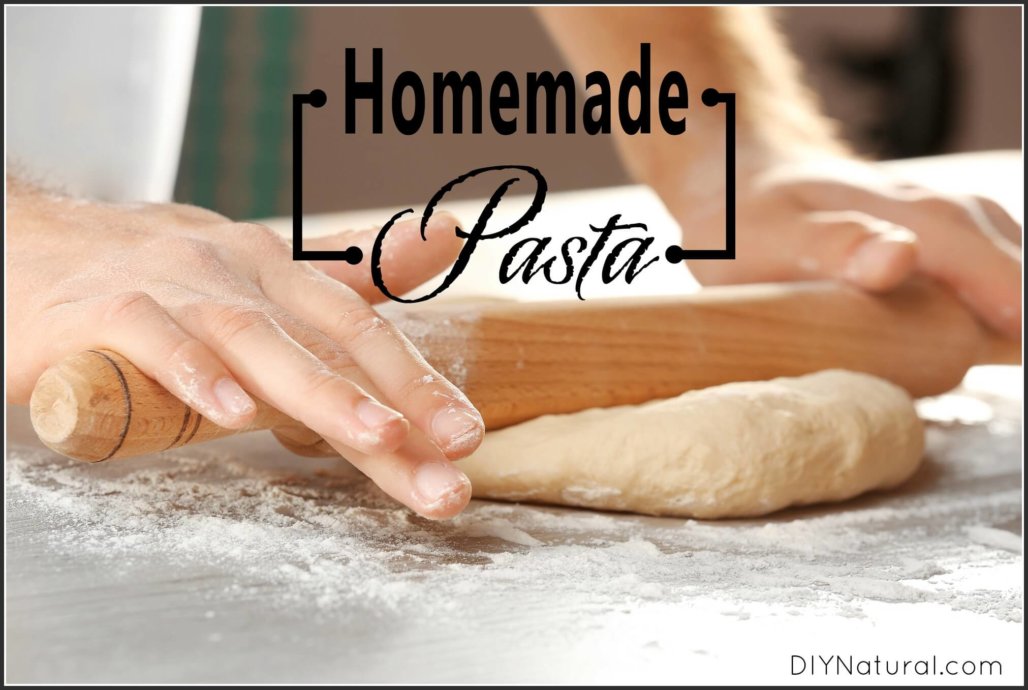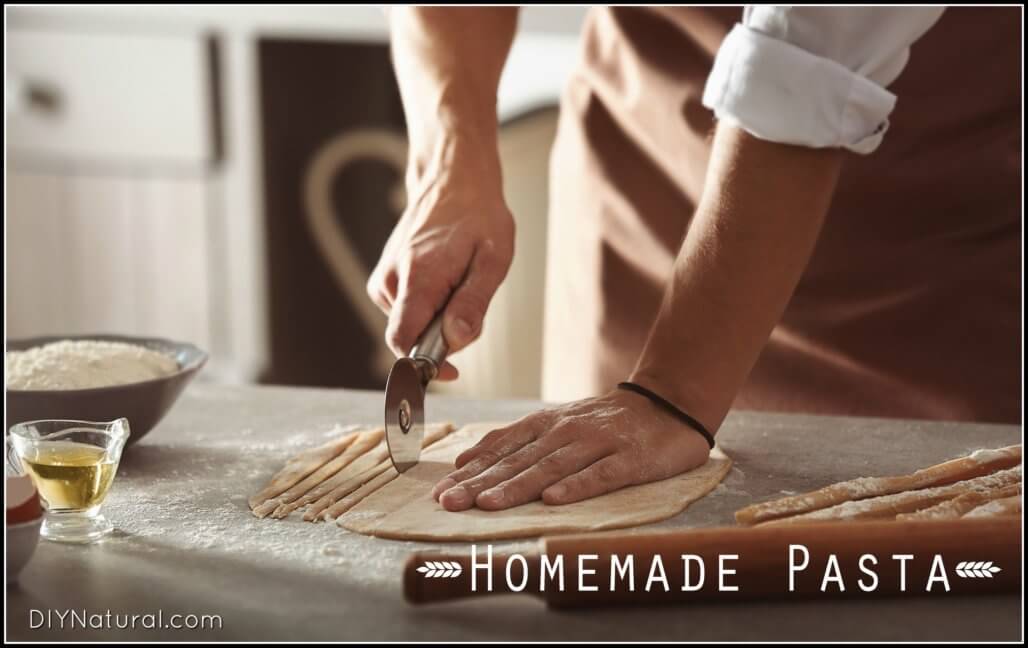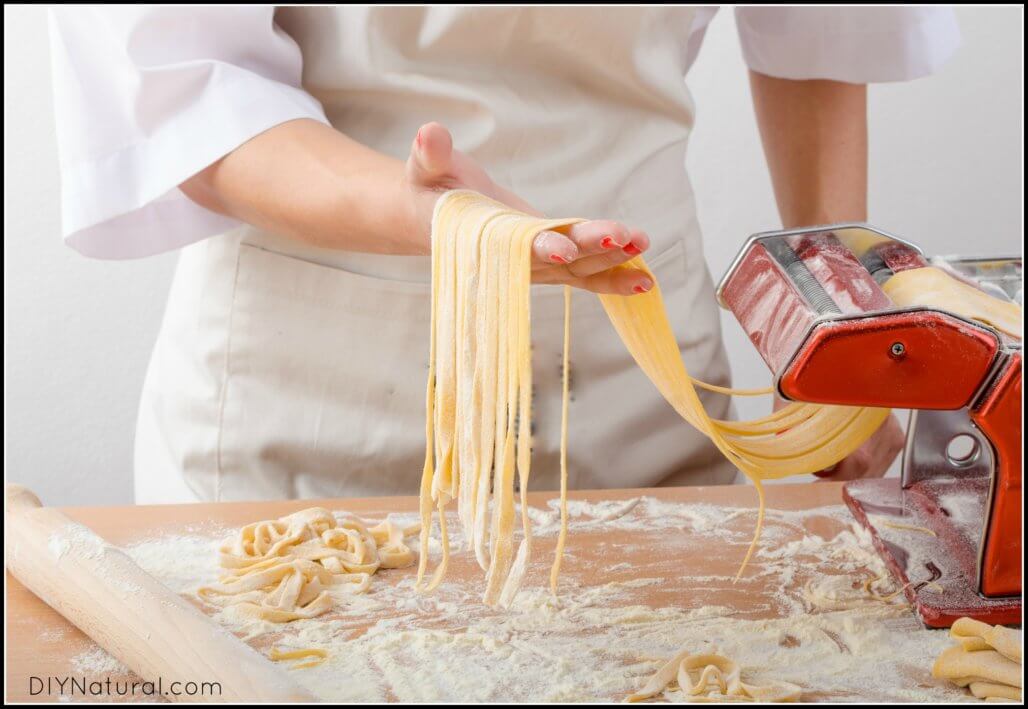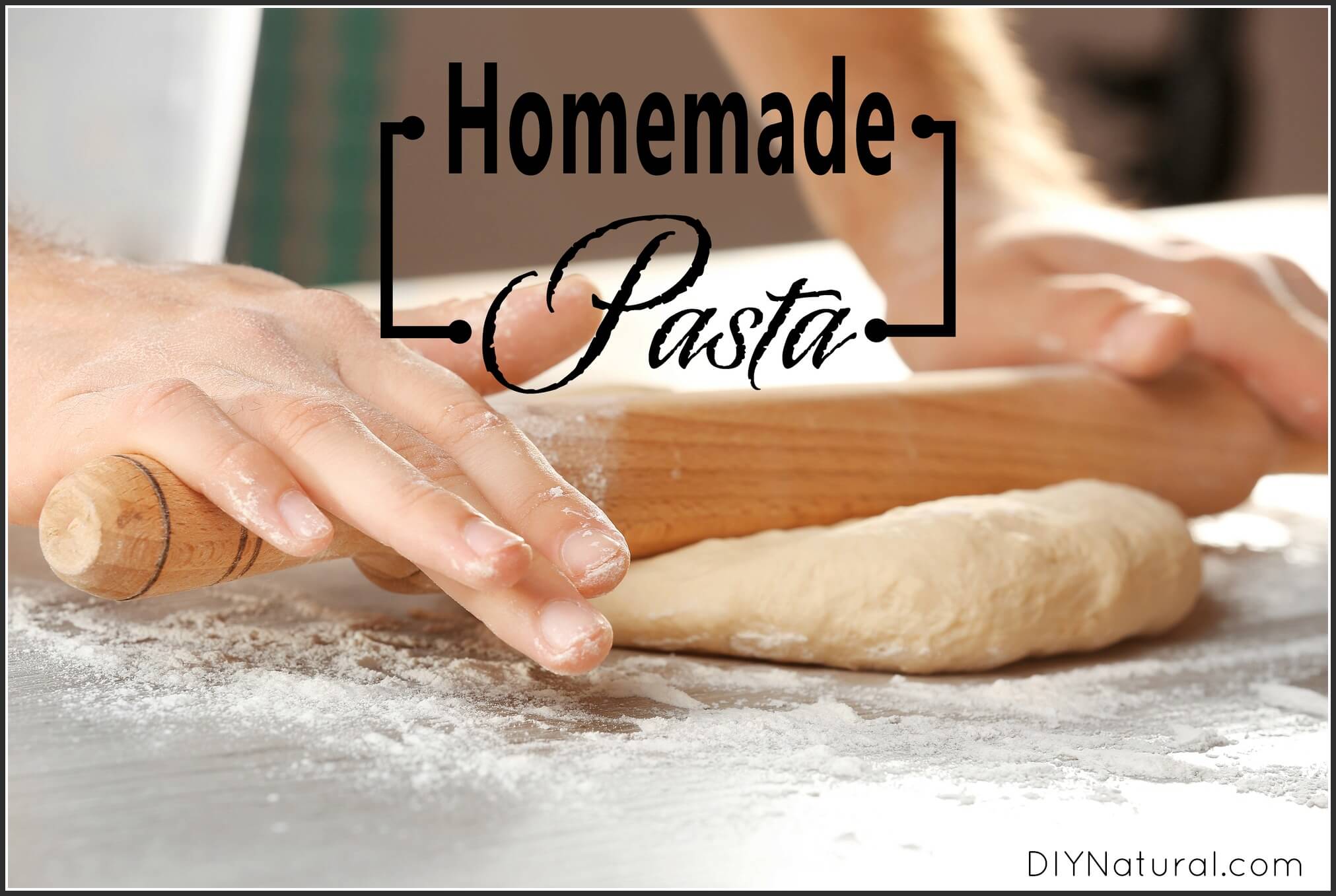
Today I’ll share my grandmother’s basic homemade pasta recipe, along with options for making the recipe gluten-free and/or vegan and vegetarian friendly.
Pasta has always been a comfort food for me. Anytime I’m feeling down, have low energy, or want a quick meal, pasta is my go-to choice. My grandmother used to make homemade pasta from scratch and I picked up a few tips from her. I share her basic recipe below along with options for making it gluten-free and/or vegan-friendly.
Homemade Pasta
Pasta is made with very few ingredients. Flour, eggs, water, salt, and some recipes call for oil and/or baking powder. Durum wheat, or semolina, is most often used as the flour. Durum flour will make a durable, yet soft noodle. When you get into gluten free variations like rice or sunchoke flour, the noodles get more fragile. (More about these later in the article.) Let’s break down the ingredients and what they’re used for:
Flour
Both durum and semolina flour are products rendered from milled durum wheat. Durum is the type of wheat, whereas the term semolina refers to the wheat middlings from the durum wheat. Semolina is a heavier, more coarsely ground flour.
Durum wheat flour is most often used in pasta because of the high protein content. It is also chosen because of the high gluten content. Noodles need to stretch and gluten provides this ability.
Water
Water will help the flour bind to itself and hold together. It makes pasta sticky so that it can be made into a ball and then rolled out. You may need to use more or less water depending on the humidity where you live.
Eggs
Eggs add elasticity to pasta, making the stretching easier. They also add flavor and color, and make the noodles silkier. Choose farm fresh eggs when you can. The yolks are darker and richer, making a golden yellow pasta dough.
Salt
Pasta dough is flat and bland without salt. I use Himalayan Pink salt, but you can use any type of salt. Stay with finer salts; coarse salt will not blend into the recipe well, making it more coarse than silky.
Oil
Adding oil is optional; it will make the pasta dough softer.
Homemade Pasta Recipe

Here’s my grandma’s basic pasta dough recipe:
Ingredients
- 2 cups flour (find organic durum wheat semolina flour here)
- 3 large eggs
- sprinkle of salt (find finely ground Himalayan Pink salt here)
- spray bottle with filtered water (find the best water filtration systems here)
- oil, optional
- other additions, optional (found in the instructions)
Process
1. Sift flour and salt onto a cutting board, mounding it into a hill. Make a well in the center. Place the eggs in the well and begin mixing. Swirl your fingers in the eggs, breaking them as you go. Start grabbing bits of flour from the walls of the well. It will gradually get thicker and begin to form a ball. If it is very dry and falling apart, spray with water a few times to wet it down some. You don’t want too much moisture, or it will be soft and mushy.
2. This is the point at which you can add the “other additions.” I grow herbs, so calendula and lavender flowers look nice in the dough. Or try some parsley or oregano. To make a beautiful black pasta add some squid ink to the dough. If you want green pasta you can add some chopped spinach. Stinging nettles make a really unique green, herbal pasta.
3. When a ball starts to form, knead it like bread dough a few times. Oil the outside of the ball and place in a bowl. Cover with a damp towel and let it rest for about 30 minutes. This will allow the gluten to develop and make a smoother dough.
4. After 30 minutes, you can either roll it out on a cutting board and cut it into strips, or use a pasta machine. A lot of recipes have you fold it over and over and roll it out again and again, but my Gram never did. She rolled it out, cut it, and laid it on a dish towel to dry a bit. You can dry it all the way if you wish, making a shelf stable pasta. You can also freeze the fresh noodles, which will keep a few weeks in the freezer. Because of the structure and air between them, freezer burn can happen in a few weeks, so use them quickly.

Cooking Homemade Pasta
1. Bring a large pot of water to a boil, adding a bit of salt if you didn’t add salt to your dough.
2. Toss your pasta in the water and stand by. Fresh pasta takes about TWO MINUTES to cook, so don’t walk away. You want the eggs to firm up and the flour to become moistened. If you remove the noodles too soon they will be pasty. Remove them too late and they’ll be mushy. Test them at 90 seconds, and cook another 30 seconds if needed.
3. Drain, but don’t rinse. I coat mine with a bit of olive oil to keep them from sticking together. Serve hot!
Homemade Pasta: Gluten Free
To make gluten free noodles, you can substitute one of the following flours, or mix them: brown rice flour, tapioca starch, garbanzo bean flour, rice flour, sunchoke flour, corn flour, quinoa flour, potato starch, and even acorn flour.
When using any of these flours, be sure they are ground into a fine powder. Rice flours especially tend to be gritty. You can use the same measurements, but again, keep and eye on your humidity.
I still allow gluten free pasta to rest, even though no gluten is forming – they just seem to turn out smoother. When cooking, you’ll want to cook your noodles for less time. Keep an eye on them and be prepared, they may still fall apart.
Homemade Pasta: Vegetarian and Vegan
You can certainly omit the eggs in the recipe. If you stick with just water, your pasta will probably be pasty. Try making a paste from 1 tablespoon flax seeds and 3 tablespoons water. Let it sit a few minutes, then blend until thick. This is equivalent to using one egg. You can also try substituting 2 tablespoons of yogurt or 2 tablespoons of tofu per egg. Either one will work like eggs. Some recipes don’t use eggs at all, so feel free to experiment.
Have you ever made fresh homemade pasta? If so, tell us about it!
*******




I have an automatic pasta machine that I have used, but not recently. What changes would you make if I was to use it? Want to make different shapes for variety.
I’ve never used an electric machine Ruth, so I can’t really say. With the hand crank one I have, I can vary the width and depth of the noodle. Maybe you can start there.